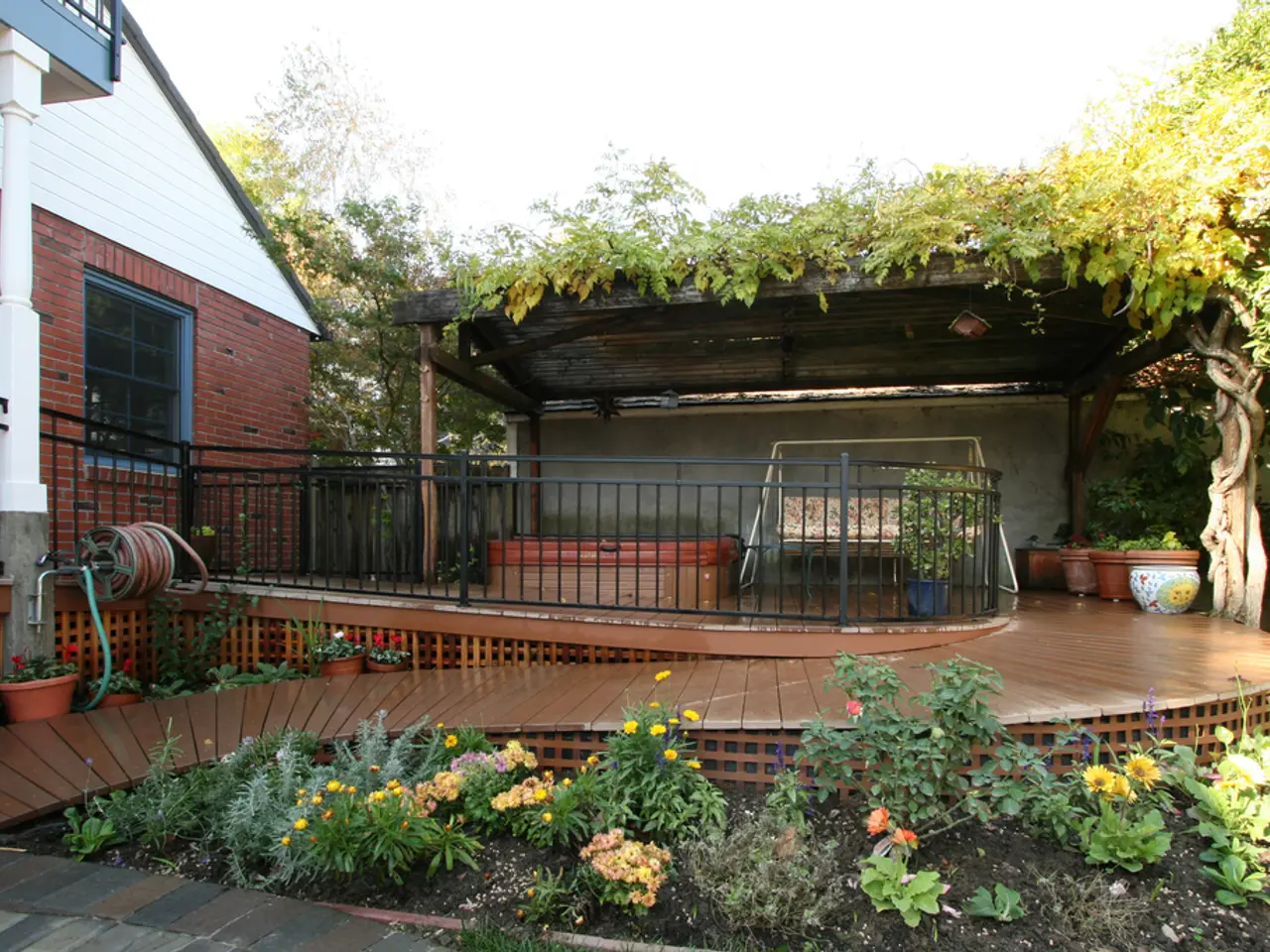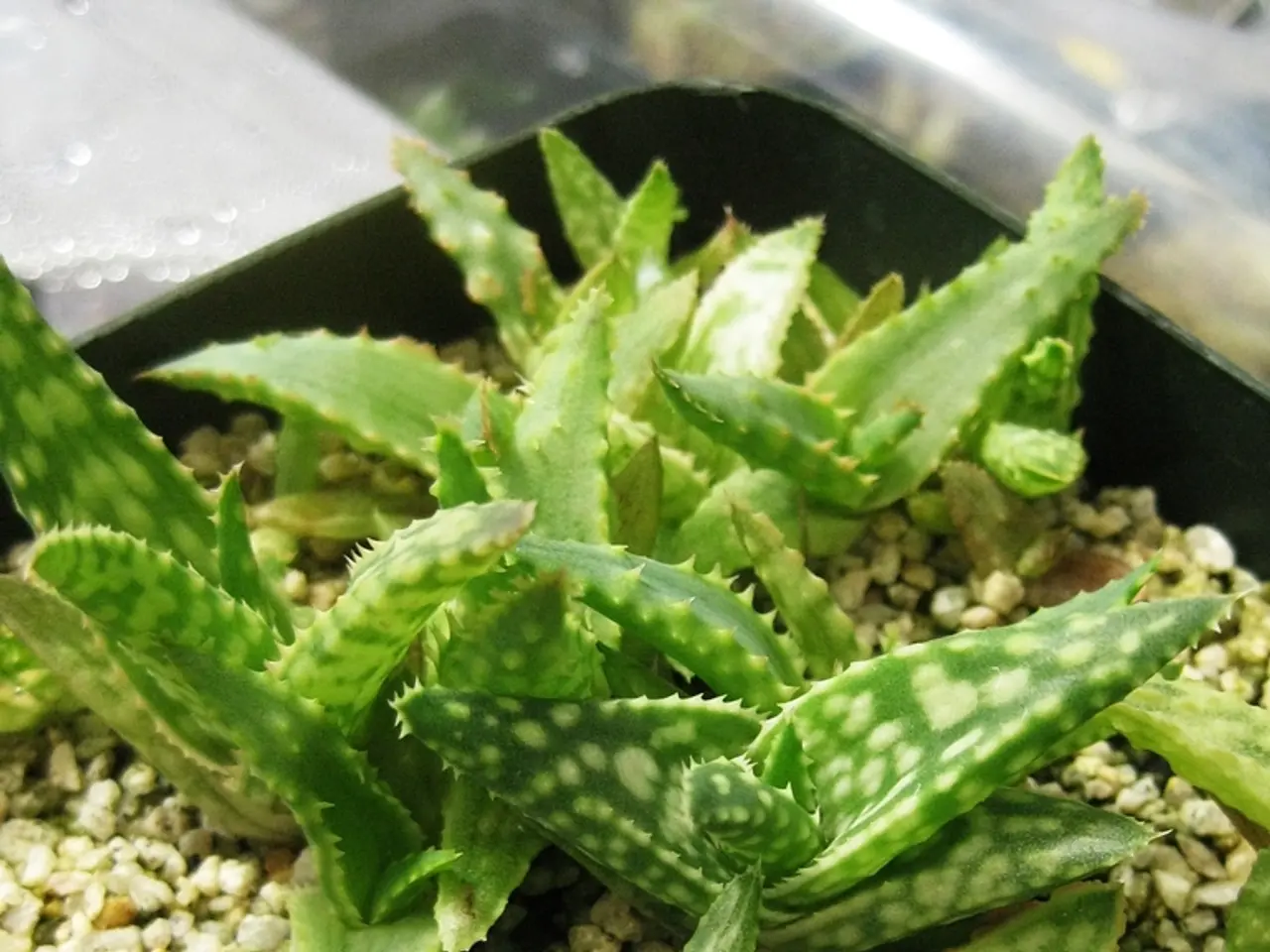Strategies for Shielding Your Garden During a Construction Project and Preserving Your Greenery
Protecting your garden during a home extension project is crucial to avoid damaging your plants, shrubs, and trees. While extensions are exciting, it's essential to ensure your green space doesn't suffer as well. Here's how to keep your garden in tip-top shape during the construction chaos.
Make a list of all the plants in your garden, specifying their location, age, and any special considerations. Include information about rare, expensive, or delicate plants, as well as mature trees and long-established flower beds that need extra care.
Clear up the garden
Clearing the garden before construction begins is essential. Trim excess branches and roots that may be in construction workers' way, and make sure there's easy access for workers and machinery throughout the garden. Remove dead leaves and rake paths clean. Laying down plywood sheets or lawn protection mats will help distribute the weight of heavy machinery evenly and prevent deep ruts.
Plan construction around plants
Smaller plants may be better lifted and stored in containers until the work is done. Larger trees and shrubs should be moved temporarily and replanted after the project is finished. Mulching around trees can protect their roots while cushioning against soil compaction. Watering your plants during the construction period will also help them cope with the disruption.
Covering plants during construction will shield them from harmful substances like chemicals, paint, tar, and other toxic materials. For fragile plants, build a simple frame to hold the cover up to prevent it from pressing down on the leaves and stems. Take care to avoid falling debris, which can damage both plants and the lawn. Use coverings like tarpaulins or temporary canopies to keep things tidy.
Communicate with builders
While no one wants to micromanage, keeping open lines of communication with your builders is essential. Speak with your contractor about how the project might affect the garden, including things like soil movement, dust, noise, and general mess. If there's not a clear path through the garden, indicate where you want the builders to go. Work together to create a detailed plan to protect the garden. Put any agreements in writing so everyone's clear on what's staying protected and what's being moved.
Regularly check on the garden during the construction period to ensure it's being maintained properly. If you spot any problems, address them immediately. Working together makes it easier to protect the garden and complete the project to everyone's satisfaction.
Insurance and legal considerations
Standard home insurance policies are often insufficient when it comes to garden protection during construction. It's essential to check what your current insurance covers and what liability insurance your contractor has in place. Consider purchasing specialist insurance products to cover accidental damage to garden features like patios and statement planters.
A vague verbal agreement isn't enough when embarking on a build. Instead, get a detailed pre-construction agreement that includes any specific trees or shrubs or other landscaped areas you're concerned about. This document will protect you and your builder and serve as a reference point in case of any disputes.
Protecting Your Garden During a Renovation: FAQs
What about contamination?There's often the risk of contamination during construction, which could be a violation of environmental regulations. Cement run-off, oil leaks, or paint spills can affect the soil and plants. Ask your builder about their waste management and material storage plans to minimize the risk of contamination. If toxic material spills onto your land or gets into your water supply, you could be looking at a major clean-up. Test your garden soil before the construction begins to establish baseline quality.
Now that you understand how to protect your garden during construction, learn how to make an extension work with your garden to create a harmonious outdoor space.
Additional Tips for Protecting Your Garden:
- Install lightweight, visible safety fences like the Tenax Guardian Safety Barrier Fence to cordon off the garden area from construction activity.
- Use garden netting, tree protection wraps, and plant covers to protect plants from dust, debris, and accidental damage.
- Raise garden beds using galvanized steel or wood to protect plants from soil-borne pests and construction-related disturbances.
- Arrange plants with similar protective needs together, using taller, sturdy plants to shield more delicate ones from dust, debris, and harsh sunlight.
- Construct framed covers using exterior-grade materials and chicken wire or poultry netting around raised beds to protect plants from falling debris, dust, and unintentional trampling during construction.
- Drill pilot holes and use exterior-grade screws when assembling covers to prevent wood splitting and ensure durability against weather and long-term wear.
- Creating a list of all the plants in your garden, including their locations, ages, and special considerations, is vital before construction begins.
- Clearing the garden by trimming excess branches, roots, and removing dead leaves, and laying down plywood sheets or lawn protection mats will help distribute weight and prevent damage.
- Smaller plants can be temporarily lifted and stored in containers, while larger trees and shrubs may need to be moved and replanted after the project is complete.
- Covering plants during construction with tarps, temporary canopies, or simple frames to hold the cover up can protect them from harmful substances and debris.
- Communicating with builders about potential impacts on the garden, such as soil movement, dust, noise, and general mess, is necessary to create a detailed plan to protect it.
- Standard home insurance policies may not cover garden protection during construction, so it's essential to check what your current insurance covers and what liability insurance your contractor has in place.
- Install lightweight, visible safety fences, use garden netting, tree protection wraps, and plant covers to shield the garden effectively from construction activity, pests, and debris.








